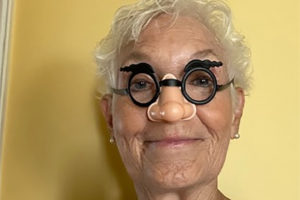Boundaries are limits we set between ourselves and others. They are separations that humans need to feel safe, valued and respected. Understanding the various forms of boundaries, recognizing when it’s time to set boundaries and learning how to set boundaries effectively is vital to maintain healthy relationships and safeguard our own well-being.
Types of Boundaries
- Physical boundaries refer to personal space and physical touch. Healthy physical boundaries include an awareness of what’s appropriate and what’s not in various settings and types of relationships (hug, shake hands or kiss?). They may be violated if someone touches you when you don’t want them to or when they invade your personal space.
- Intellectual boundaries refer to thoughts and ideas and include respect for others’ ideas and an awareness of appropriate discussion. Intellectual boundaries are violated when someone dismisses or belittles another person’s thoughts or ideas.
- Material boundaries refer to money and possessions. Healthy material boundaries set limits on what you will share and with whom. Material boundaries are violated when someone steals or damages another person’s possessions or when they pressure them to give or lend them their possessions.
- Time boundaries refer to how a person uses their time. To have healthy time boundaries, a person must set aside enough time for each facet of their life such as work, relationships and hobbies. Time boundaries are violated when another person demands too much of another’s time.
Signs It’s Time to Set Boundaries
- Feeling chronically taken advantage of emotionally, financially or physically
- Saying “yes” to please others at your own expense
- Not meeting your needs because you tend to fear conflict and give in to others
- Often feeling disrespected by others, but not standing up for yourself
- Fearing abandonment, so settling for less than you deserve
- Engaging in people-pleasing behaviors in order to be liked and receive approval
- Engaging in disrespectful behavior that hurts others
- Flirting with those already in relationships or flirting when you are in a relationship even when it harms others
- Doing whatever you want to get your needs met and believing that limits don’t apply to you
Setting Boundaries Means…
- Verbalizing what impacts your comfort levels —Using clear, brief statements to clarify one’s comfort level and needs.
- Learning how and when to say “no” —Brief and clear is best (“I appreciate your invitation, but that won’t work for me this weekend.”) A dissertation is not necessary, and often invites further discussion rather than closure of the subject.
- Being honest and transparent—Marking a decision to set a boundary isn’t enough. You must also communicate those boundaries to the people they involve. They are not mind readers.
- Knowing how to expand, or constrict, the boundaries we set—Healthy boundaries mean being able to adjust depending on the situation.
How to Set Boundaries the Right Way
- Think through what you need/want to accomplish—Give yourself time to consider what is important and consider your personal values—what matters to you.
- Understand that different relationships require different boundaries—Boundaries with an intimate partner may be flexible, while work relationships call for more consistent, rigid boundaries.
- Evaluate your relationships—If you aren’t getting enough of what you value such as respect, family time, etc., then the relationship may need to change or end.
- Realize it takes practice and patience—Change is unsettling even though the end may strengthen and empower. Give it time and expect to practice, practice, practice.
- Pay attention to relationship changes and hold your ground—Expect resistance because others have learned to be comfortable in their former manner of relating and have gotten a payoff for your “old behavior.”
If you find yourself struggling with boundaries and are not sure if visiting with a mental health professional may benefit you, take our free, confidential, online screening.
Ruth Few
Clinical Social Worker, Bryan Behavioral Health Services
Ruth Few graduated from the University of Nebraska-Lincoln with her master’s in social work in 1969. Since 2004, Few has worked at Bryan Health as a mental health therapist and clinical social worker specializing in psychosocial assessments, individual and group therapy, and discharge planning.









